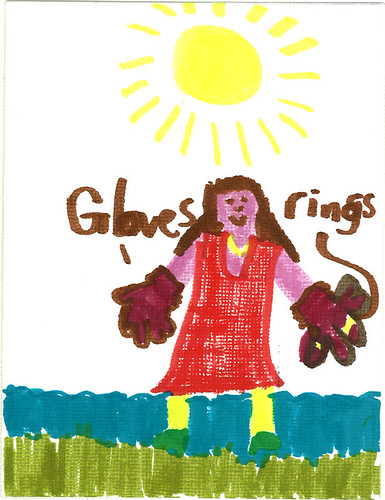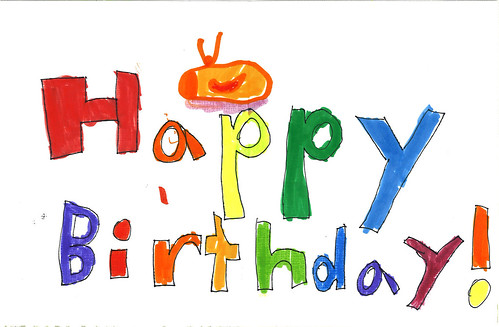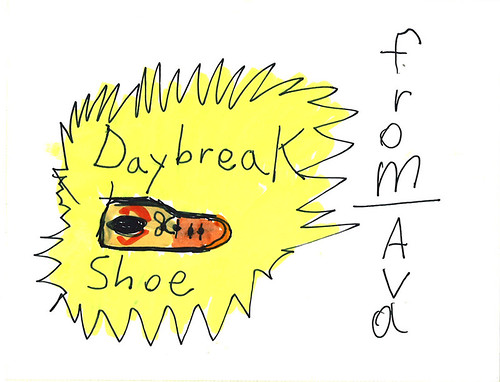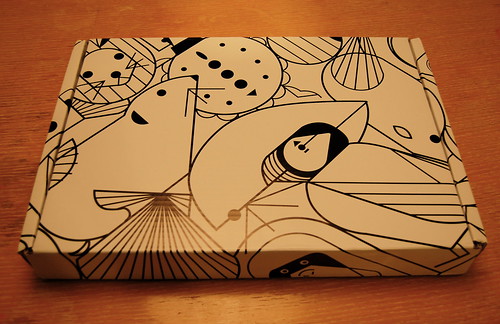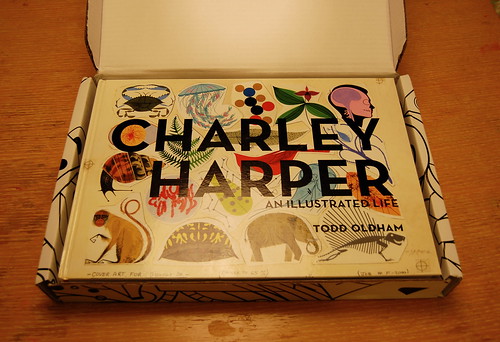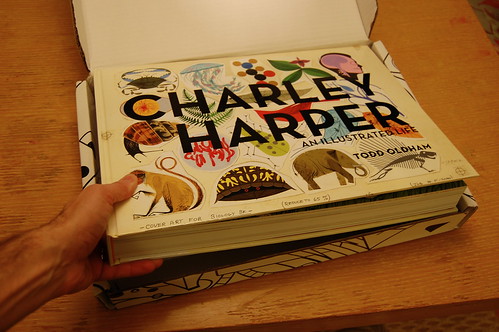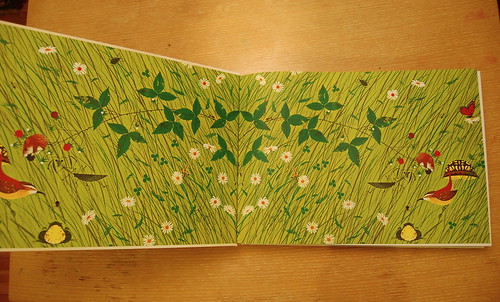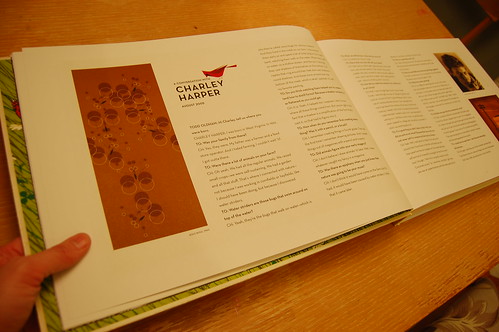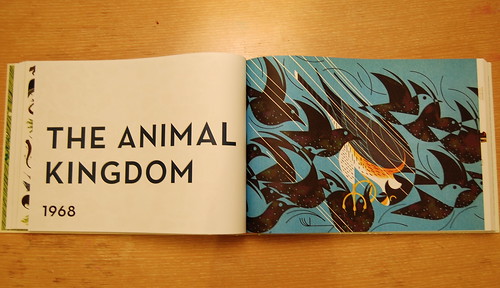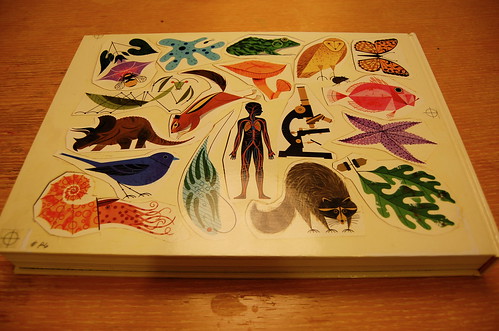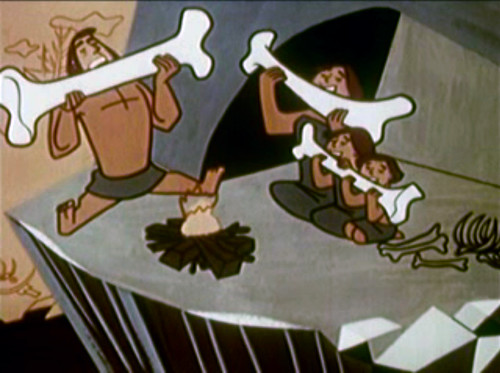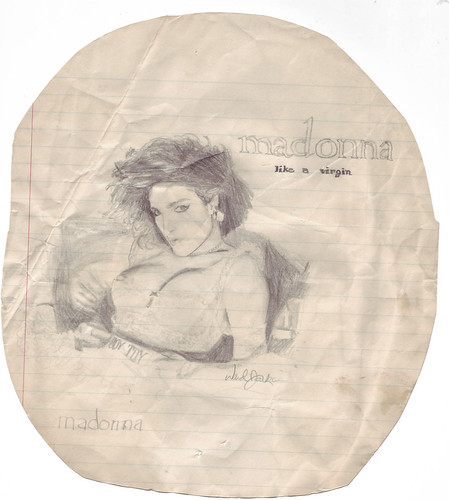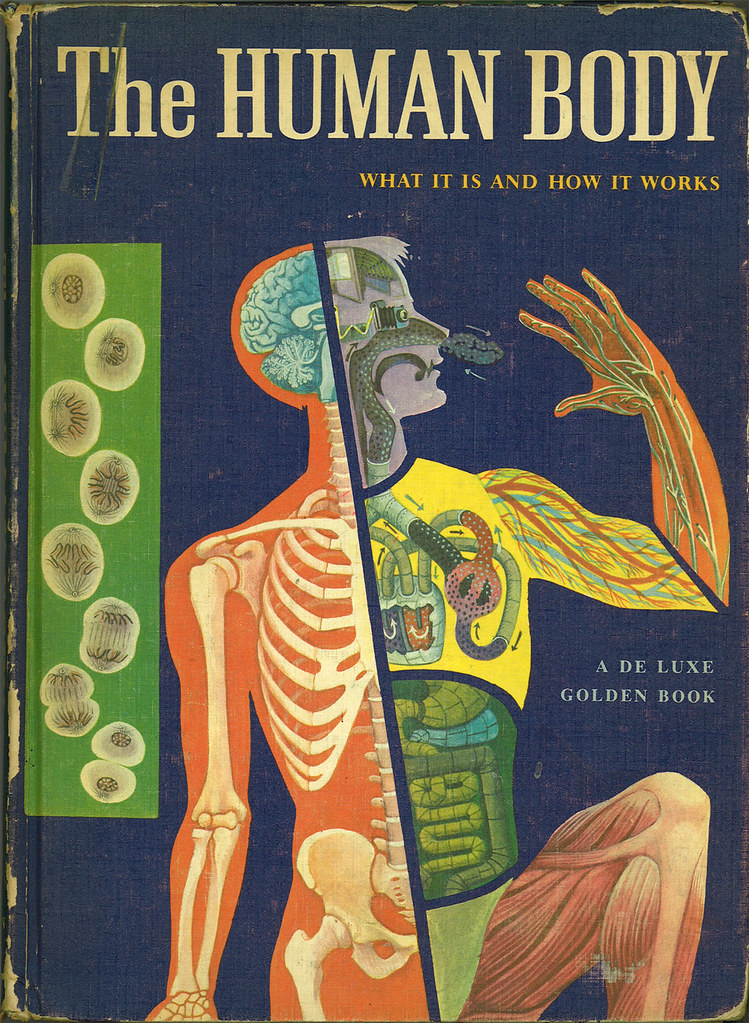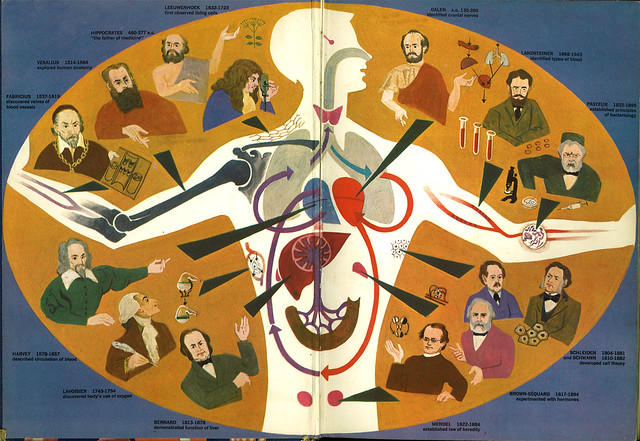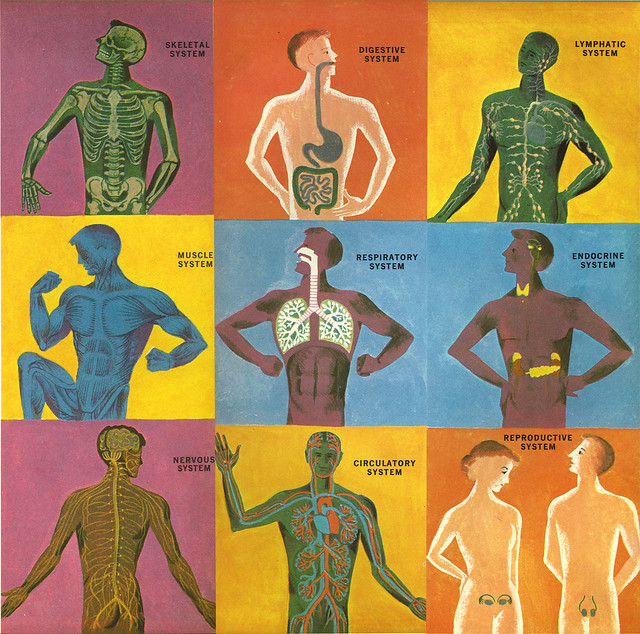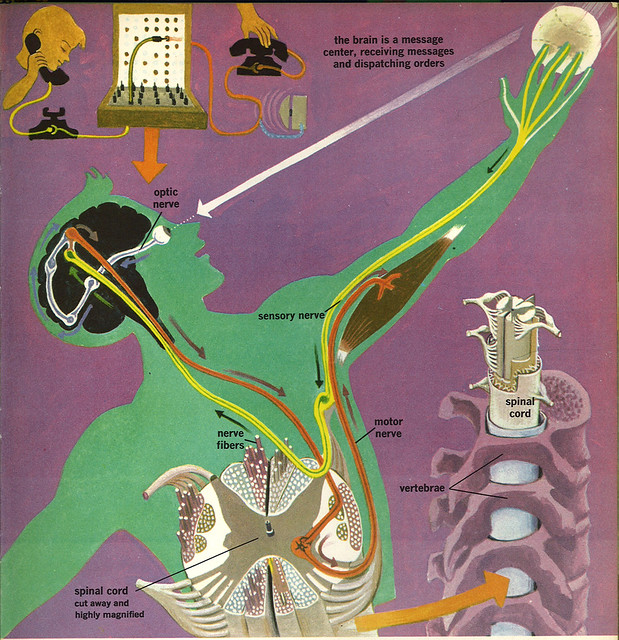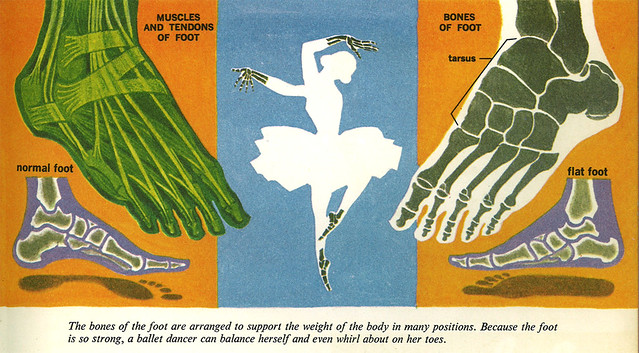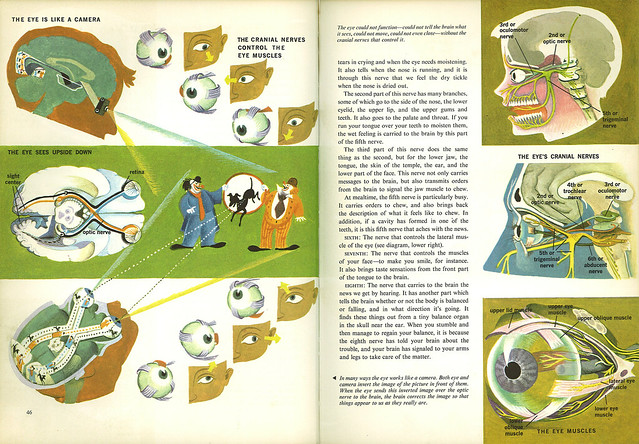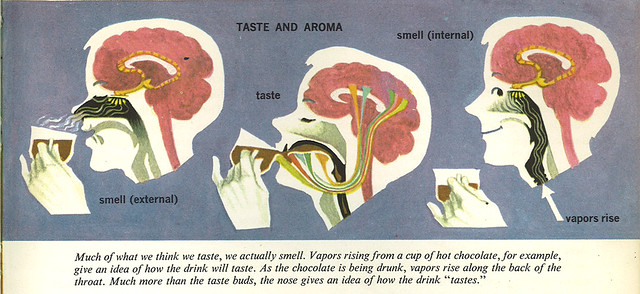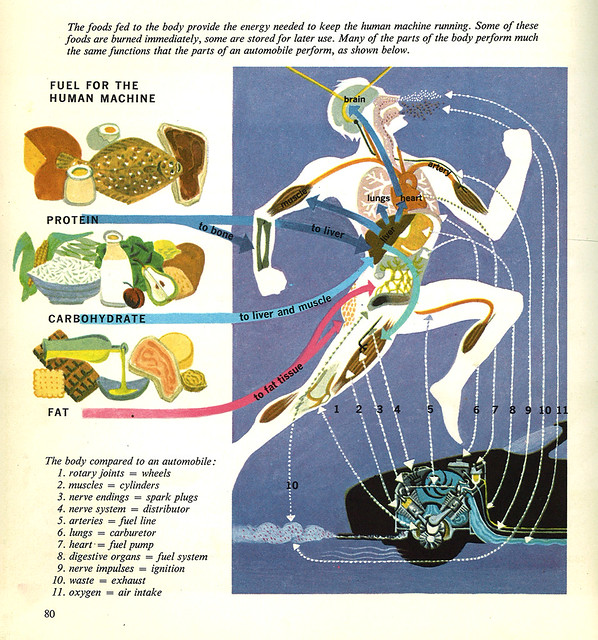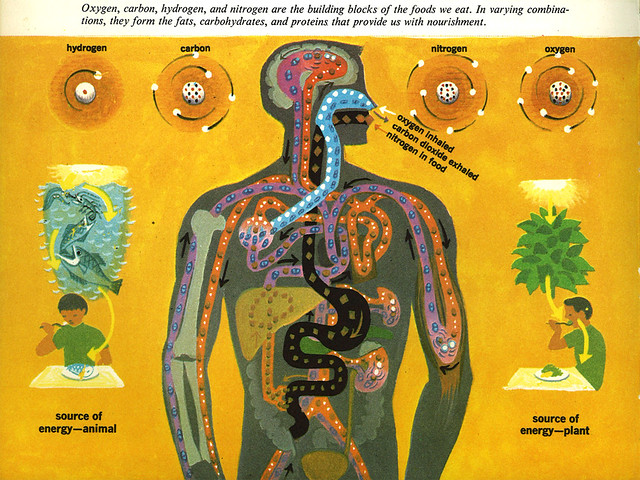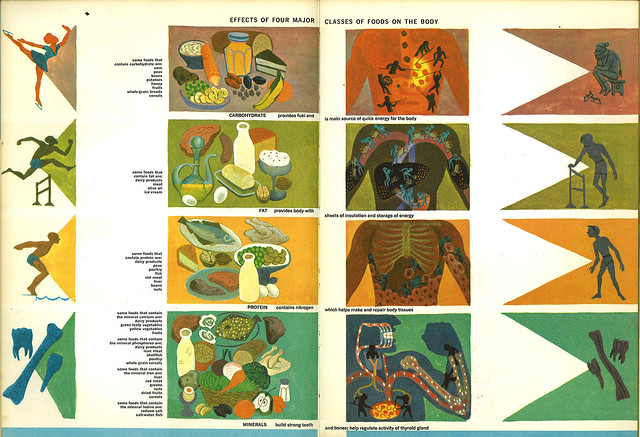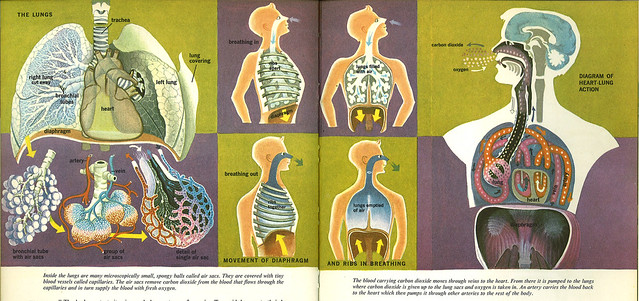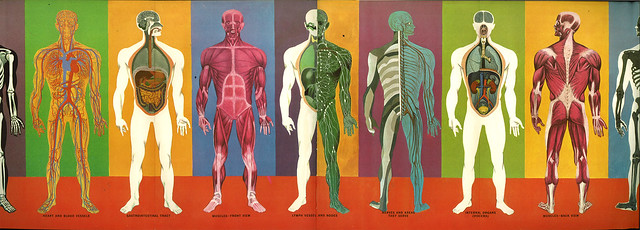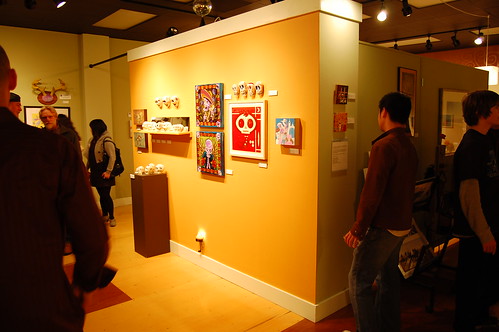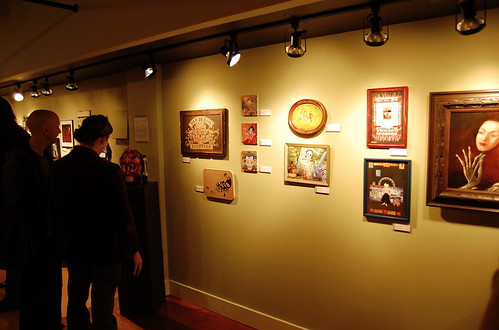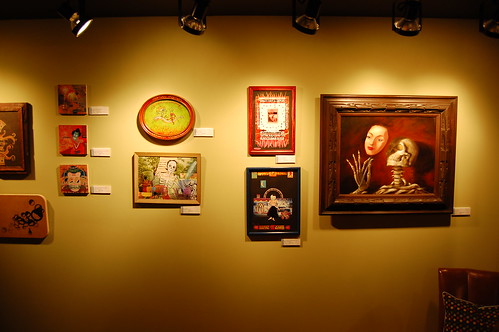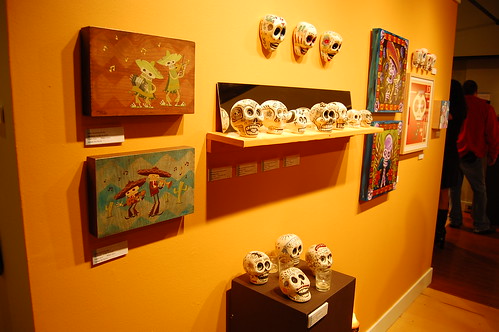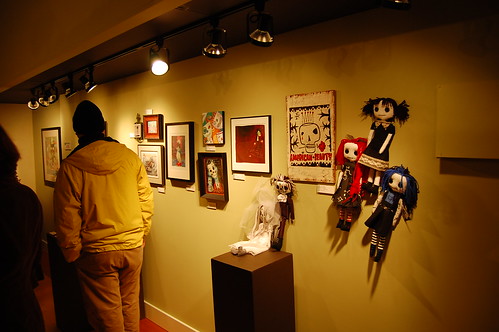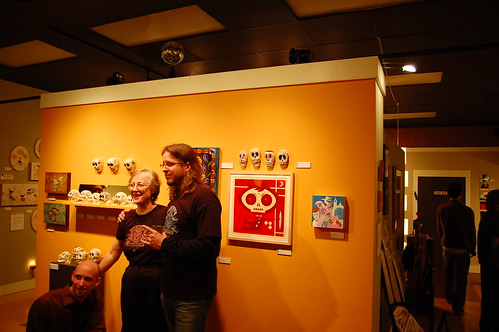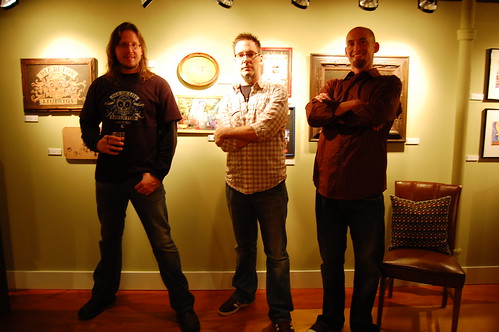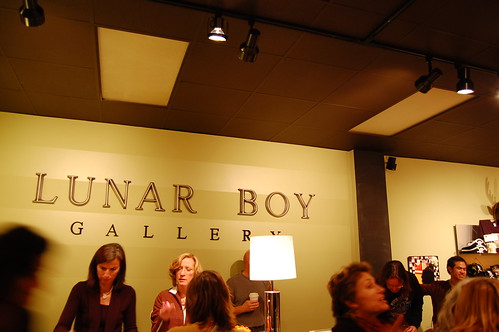SYMPHONY IN SLANG (1951, dir. by Tex Avery) holds a special place in my heart. Back in the late 80's, when I finally realized that I wanted to be an animator, I bought some VHS tapes to analyze and study. One of them was
Tex Avery's Screwball Classics, with
Symphony In Slang included. I immediately fell in love with this cartoon. It was so different and opposite from the other fare that I had been watching at the time. A nice breath of fresh air. To me, the idea of visually recreating slang terms was so perfect for the cartoon realm -- most of the gags you would see in cartoons (especially in Avery's) were visual puns anyway. So it all made perfect sense to me.
Done as a one-shot, with all original characters who never appeared in any other MGM cartoon,
Symphony is pretty much an anomaly in Avery's canon. What makes it even more so is the fact that Avery hired designer Tom Oreb to design all the characters and layout for the entire film. Just for this one cartoon. That's it. Why? Why did he hire an outside artist out of the blue, it seemed, to work on this one and only short for him? Oreb had been working at Disney pretty consistantly at the time, but left the company in the early-50's. To my knowledge, Oreb worked with Avery at MGM for this one cartoon and then went back to Disney where he designed characters for such projects as
Toot, Whistle, Plunk & Boom,
Sleeping Beauty and
One Hundred and One Dalmations. I asked
Amid Amidi about Oreb during this time:
"The only thing I'd say is that Oreb's history is very sketchy at this point. I believe he'd left Disney and was freelancing around. He designed a number of commercials for Ray Patin around 1952-1953, and I think he was in and out of Disney's at this time, if not completely gone. But it's not like Symphony was the only non-Disney project he did around 1950-1952. It's all a bit of a mystery at this point."
So Oreb didn't go off to do this one cartoon and then come back. He worked at some other studios as well. But what was the deal? What was Avery's intent for hiring Oreb for this one cartoon at MGM anyway? Well, here's my humble opinion on this matter:
Tom Oreb's style was unique, angular and highly stylized. It would be considered "modern" and contemporary at the time: cool, hip, new. On the other hand, most of Tex Avery's cartoons at the time were part of the MGM "house style", if you will -- Droopy, The Wolf, Red, all were products that came from the classic, rounded, traditional style of character design, along with semi-realistic painted backgrounds. These two opposing styles play an important part in
Symphony, supporting the story on visual terms. When our main character (John) dies and approaches the Pearly Gates in the beginning of the cartoon, he's surrounded by lush backgrounds and well-rounded characters, such as St. Peter and Noah Webster. But he's not of this world. John's a hipster, a jazz kat. He's of the New Order, speaking in tongues with his hep-jive vocabulary. Our guy is definitely a fish out of water, designed in the flat-like stylized modern look by Oreb, while everything else is not. When we see John's life story visually played out in Webster's mind, his world is flat and angular, with bold colors. Webster is visualizing John's world in this new, modern style. John is the antithesis of the Old World. When John reaches Heaven, the two worlds collide. Just as the two opposing worlds clash, so too, does their visual styles. Hiring Oreb was clearly intentional on Avery's part, knowing that Avery probably wouldn't be able to pull off that "new look" on his own. I think it was a perfect decision; a match made in Heaven.
The story is simple: A young man, John, dies and is approached at the Pearly Gates by St. Peter who is baffled by his strange use of language: "What's cooking? How's tricks?" Obviously unaware of current slang, Peter asks Noel Webster what he can make of it. When Webster asks John to proceed with his life story, we witness Webster imagining every single slang term (along with other expressions and sayings) that this guy utters. From being "born with a silver spoon in my mouth", to "hanging out with the boys", to "going through a bunch of red tape" while trying to get out of jail, we witness these things literally. By the end of it, John has "died laughing", bringing us up to current. He then asks Webster, "So, what'dya think?" When Webster finds it hard to answer, John then asks, "What's the matter? Cat got your tongue?" Sure enough, the camera pans over to a little cat (with a halo, of course), holding a pink tongue in his paw. It's a simple concept, but brilliant through Avery's direction. With the use of limited animation, the movements are executed in a simple manner, basic and to the point. The concept is the main star here, with every gag being visually presented verbatim. The pacing is not as quick as Avery's usual fare, with the dialogue being very straight forward. As John says his line, the scene is presented thusly. No quick cuts, no complicated camera moves. Save for a few pan shots, and the occasional zoom out, the camera is mostly stationary.
Below, I have put together the entire cartoon of
Symphony In Slang through frame grabs of each and every scene. Some scenes have two or more frames, if there was a camera pull out, for example. I put all these frames together so I can see
Symphony in its entirety, to see any patterns that may be evident, to see the choices being made for layout, composition, character posing, camera positions, and so on. It's fascinating to see it all laid out. There were much more scenes in this cartoon than in your typical cartoon of the time, because of the nature of the story. I think that I counted over a hundred and twenty frames (not including the multiple ones for the same scene). That's quite an undertaking for our man Oreb. But if you notice, every background is executed with style and panache, only in the way that Oreb could do it. It's also interesting to see just how much the animators kept to Oreb's original designs. That's unusual for that time. By the time the director gets the characters and adds his two cents and then passes them off to the animators who add their two cents, the overall designs most likely become watered down. But not here. This is pretty much Tommy's baby, through and through.
The stats on the film:
SYMPHONY IN SLANG
(Released June, 6th, 1951)
Direction: Tex Avery
Animation: Michael Lah, Grant Simmons, Walter Clinton
Layout and Design: Tom Oreb
Writer: Rich Hogan
Music: Scott Bradley
Producer: Fred Quimby
6 minutes, 43 seconds
Released by MGM
Here are the frames (click on each to view larger):
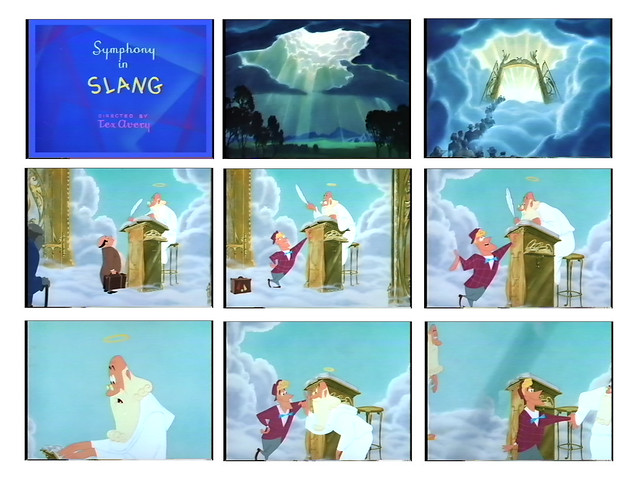
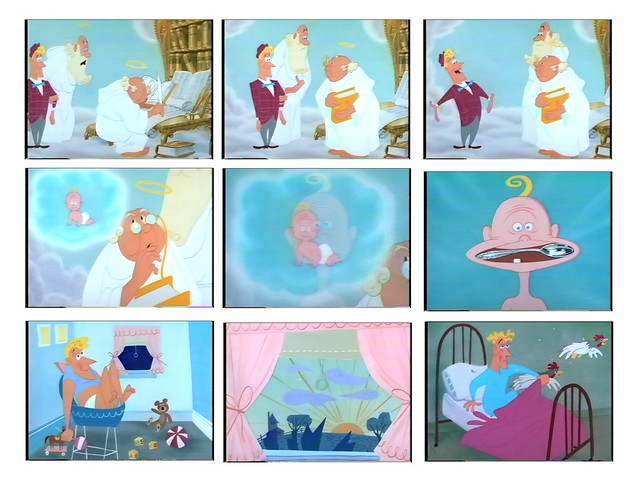
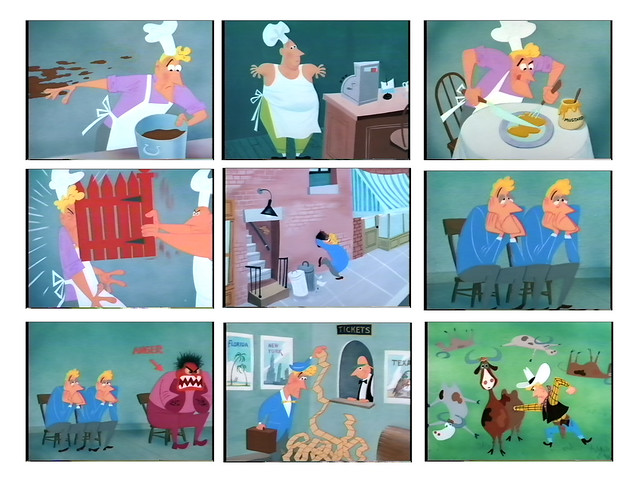
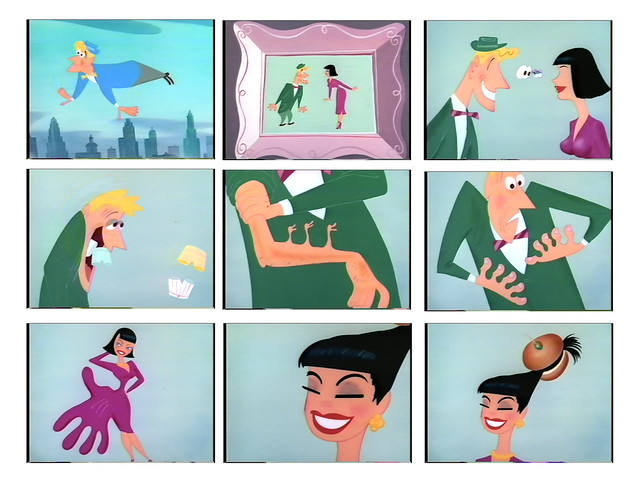
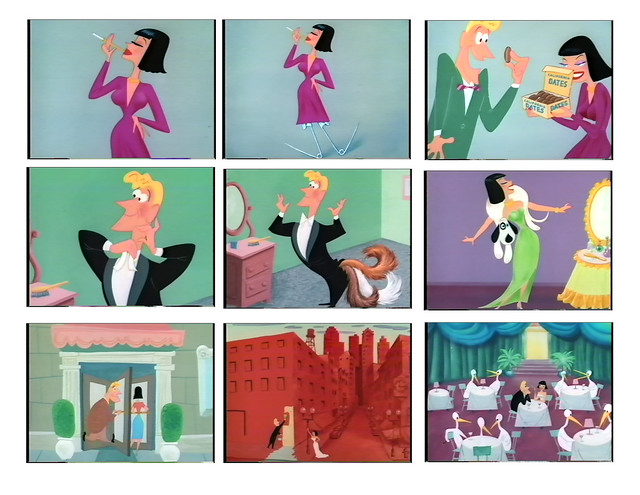
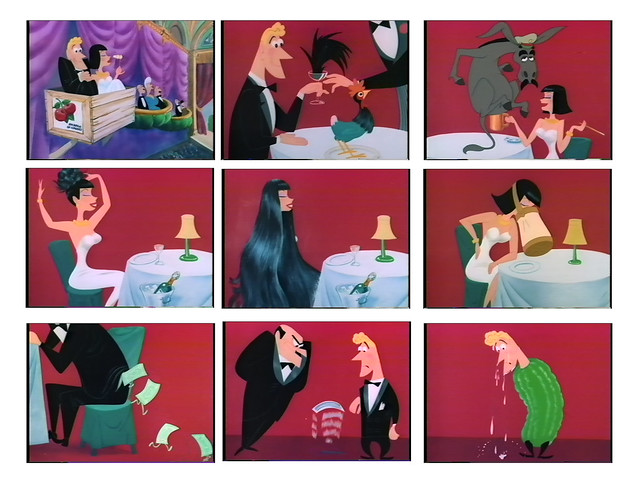
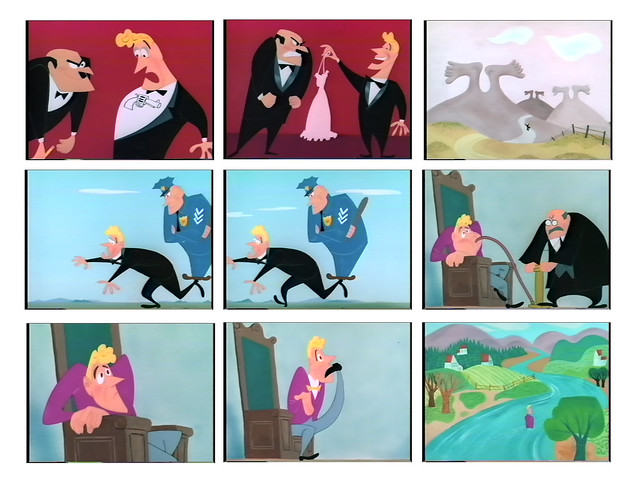
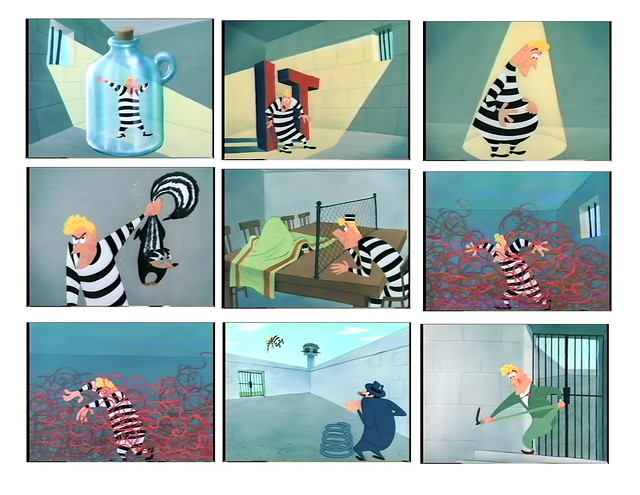
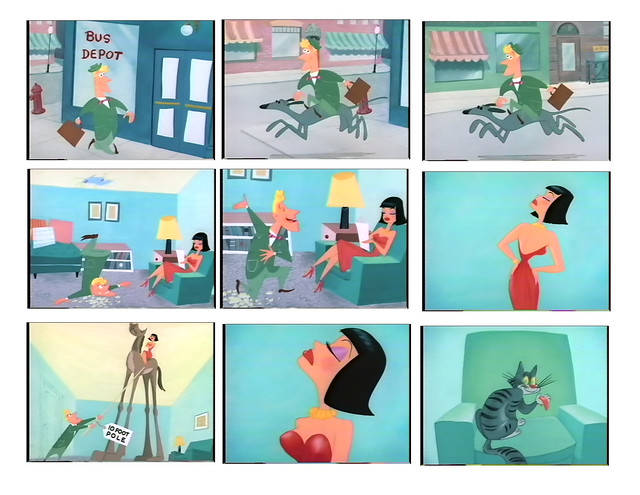
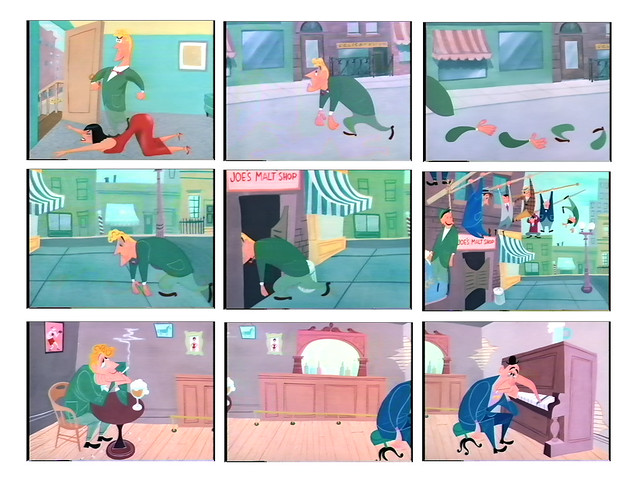
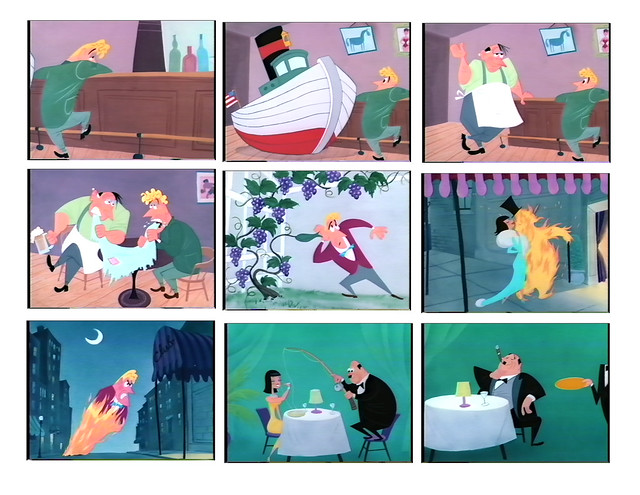
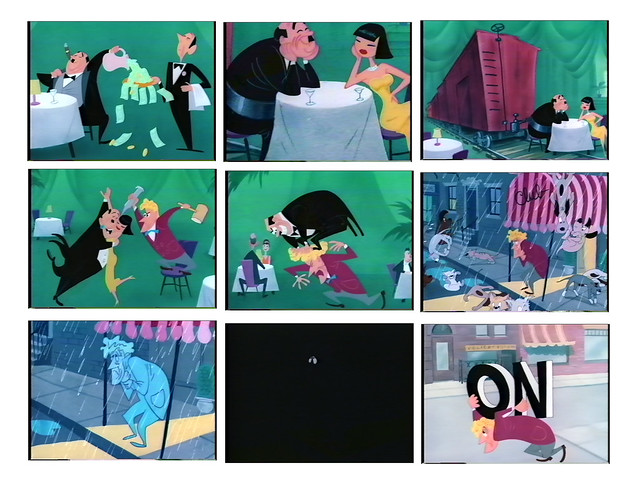
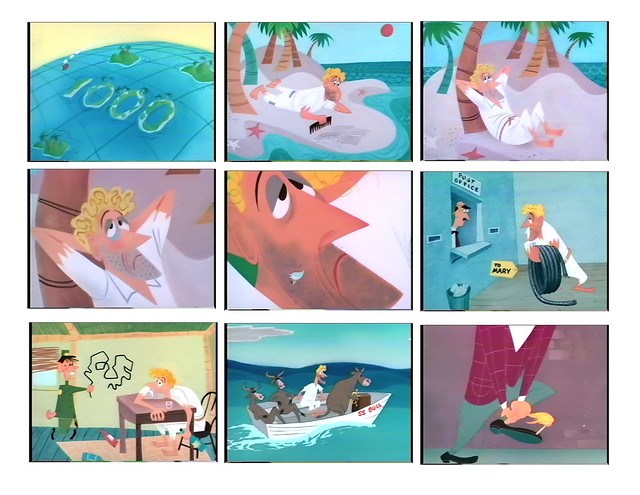
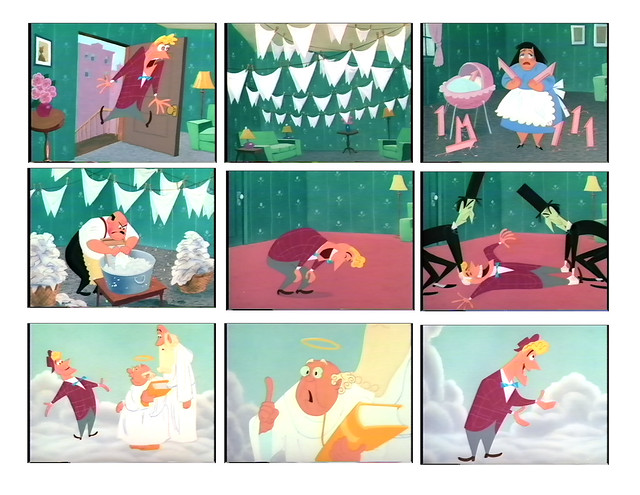
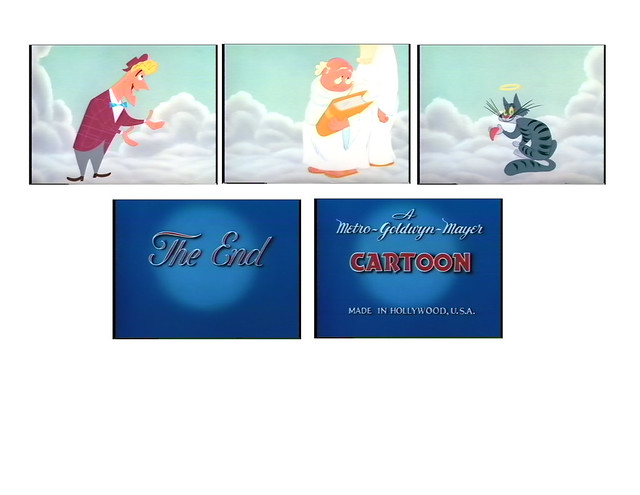
UPDATE: I've since uploaded more images from this cartoon in the Flickr set:
Symphony In Slang. Total number of images: 77.
These images taken from a VHS copy of the French laserdisc version of the cartoon. I have reason to believe that these colors are not correct. They're too contrast-y and the whites are too white (or, as we say in the biz, the "whites are too hot").
Until someone gets smart and releases a bunch of Tex Avery stuff on DVD (remastered, please -- and no
DVNR either), the only way to view
Symphony In Slang is to view it on
YouTube (ugh...) or simply order it on VHS:
This is the first part of a series on
Symphony In Slang here on The Ward-O-Matic. It's all part of research I'm collecting for a super secret side project I'm currently working on, paying homage to the great cartoons of the past. A short film that's being concocted down in the basement right now. More to come soon.
